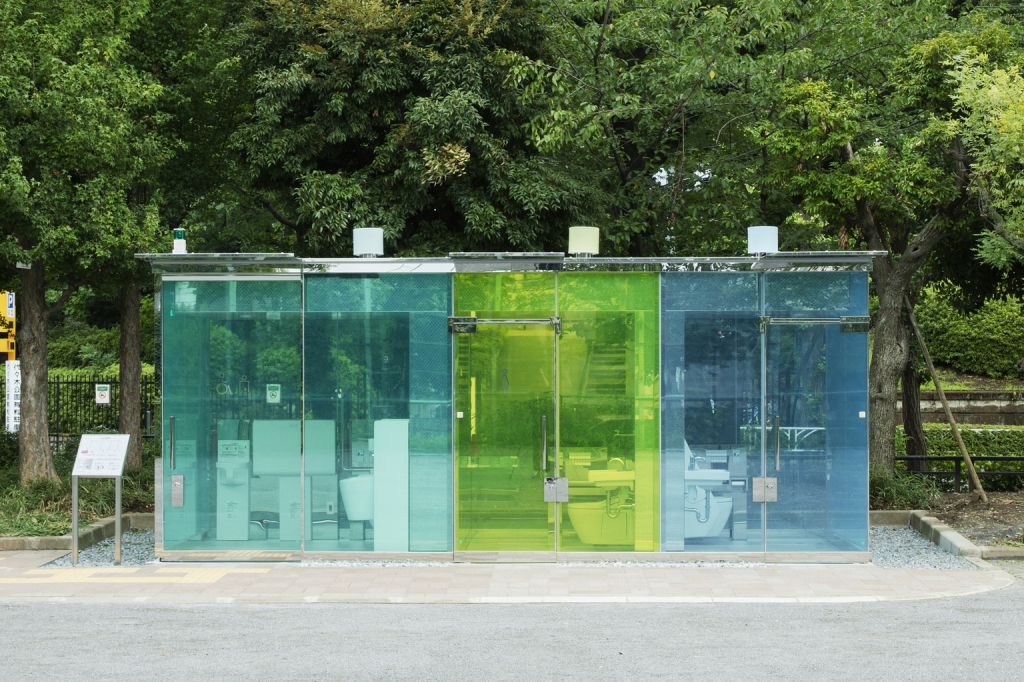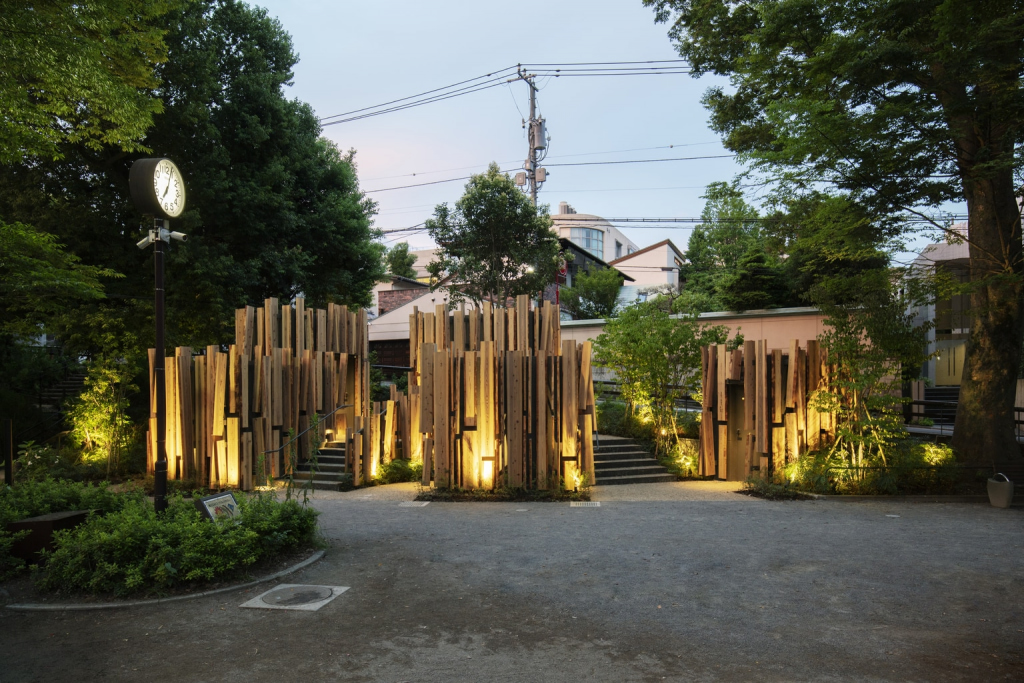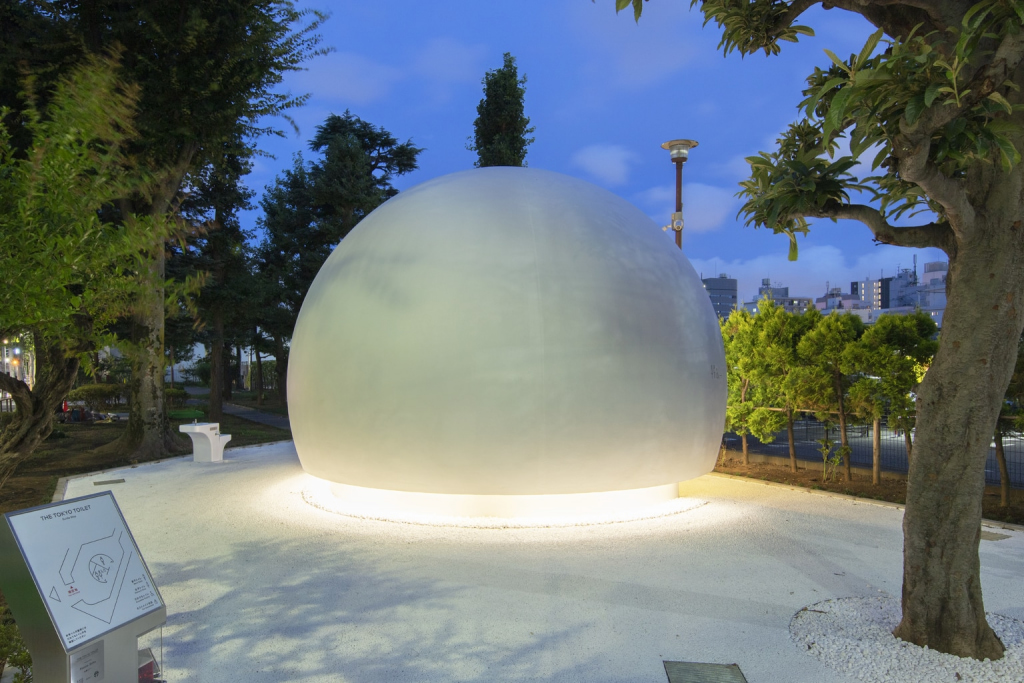The Nakagin Capsule Tower tour may have ended, but the Tokyo architecture tour lives on in the form of a new venture: Tokyo Toilet Tour. For up to four hours, attendees are able to see and experience works by 16 world-class architects as part of the Tokyo Toilet project.

Haru-no-Ogawa Community Park
What is the Tokyo Toilet Project?
In Japan, where toilets are the stuff of legend, and even feature in the television series South Park, people take them very seriously. Japanese toilets are on a different level to ones in other countries, and the public here is very exacting when it comes to lavatories. A clean toilet elsewhere may not cut the mustard in Japan. A survey by the project’s major sponsors, the Nippon Foundation, found that 30% of respondents were averse to using public restrooms.
This led to a plan to redesign 17 restrooms around Shibuya. It was named the Tokyo Toilet Project. The scheme called upon 16 of Japan’s top architects to create their own public toilets, including global superstars Shigeru Ban and Kengo Kuma. The toilets have been a resounding success, particularly Ban’s lavatories, which have attracted a lot of attention due to their color changing functionality. From May to October, the toilets lie as transparent boxes, until a user locks the door, and they become opaque, as if by magic.
A follow-up survey by the Nippon Foundation showed that people who were averse to using public toilets had dropped from 30% to only 3% as a result. The toilets also inspired Perfect Days, an Oscar-nominated feature film by director Wim Wenders, starring Koji Yakusho as a toilet cleaner going about his life.

Photos by Satoshi Nagare. Courtesy of The Nippon Foundation
What Happens on the Tokyo Toilet Tour?
Even for someone who lives in Tokyo, it is hard to experience every noteworthy toilet, as each is in its own designated space. An independent company, NearMe, has devised its own route so that everyone may experience the wonders of each Tokyo toilet. Driving around in a branded bus, attendees are guided by volunteers who introduce each toilet facility and its special features.
How Long Does the Tour Last?
There are three different options for the tour:
- Full course: this takes in all 17 of the toilets, lasting for four hours.
- West course: this 110-minute course covers areas like Yoyogi, Sasazuka and Hatagaya and features toilets by architects including Junko Kobayashi and Kengo Kuma.
- East Course: this 110-minute course includes Ebisu and Hiroo, covering architects such as Tadao Ando and Nao Tamura.
How Much is It?
The tour costs ¥9,900 for the full course and ¥4,950 for the east and west routes.









